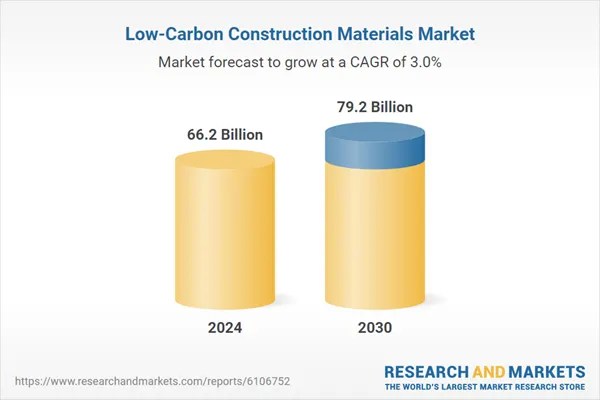Low-Carbon Construction Materials Industry Analysis Report 2025
The global market for low-carbon construction materials was valued at $66.2 billion in 2024 and is projected to reach $79.2 billion by 2030, growing at a steady 3% CAGR. This growth is fueled by increasing regulatory mandates, climate imperatives and the need to reduce the construction sector’s significant share of greenhouse gas emissions. Low-carbon alternatives, such as engineered timber, recycled steel, fly ash-based cement and carbon-capturing bricks, are being adopted to reduce environmental impact while maintaining durability and performance. Governments and international organizations are promoting their use through green building codes, tax incentives and net-zero pledges, while developers are incorporating them into residential, commercial and institutional projects.
Technological innovation and shifting market dynamics are further accelerating adoption. Advances in material science, including bio-cement, geopolymer concrete and carbon capture–integrated products — are delivering high-performance solutions that meet strict building codes while drastically lowering emissions. At the same time, investors are steering capital toward projects that align with ESG goals, and consumers are increasingly demanding greener, healthier spaces. Digital tools such as building information modeling (BIM) and lifecycle assessment software are making it easier to integrate low-carbon solutions from design to construction. Together, these drivers are reshaping the industry, positioning low-carbon construction materials as a cornerstone of the global transition to sustainable development.




